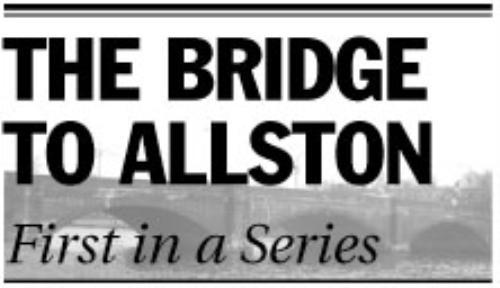
News
Summers Will Not Finish Semester of Teaching as Harvard Investigates Epstein Ties

News
Harvard College Students Report Favoring Divestment from Israel in HUA Survey

News
‘He Should Resign’: Harvard Undergrads Take Hard Line Against Summers Over Epstein Scandal

News
Harvard To Launch New Investigation Into Epstein’s Ties to Summers, Other University Affiliates

News
Harvard Students To Vote on Divestment From Israel in Inaugural HUA Election Survey
A New Hope in Allston
University expansion holds key to help Harvard focus on improving student experience

For most members of the Harvard community, Allston remains little more than a quiet town across the Charles River. Home to the Business School and most varsity athletics, it is still only a peripheral part of the University’s campus for those of us still rooted in 02138. But with Harvard in control of more land on that side of the river than in all of Cambridge, the University stands poised to consider the most promising opportunity in recent history to improve academics, housing and community resources through a radically different—and radically better—campus design.
That design has the potential to alleviate one of the most frustrating constraints on the growth and improvement of the University: the increasingly cramped and inflexible Cambridge campus. But if the University approaches this move with a clear focus on its students, it has the opportunity not only to relieve current problems but also to fundamentally improve the Harvard experience.
First among the many gains that Allston will undoubtedly bring is the ability for the University to hire more faculty and decrease Harvard’s student-to-faculty ratio. Harvard’s deans have consistently tried to recruit more scholars, but have had to confront the reality that there is simply no space available. With careful planning, not only will Harvard find a place to put the scholars it attracts, but the space itself may attract scholars to Harvard. Especially in the sciences, new labs will help the University to compete with other top-tier institutions. These new classroom and laboratory facilities will directly benefit students, who will no longer be lotteried out of courses—or forced to meet in local churches—because of space constraints.
Current Cambridge space limitations have blocked progress on the housing crunches that afflict both undergrads and graduate students. Undergraduate Houses are bursting at the seams and overflow dorms have become commonplace, contrary to the purpose of the House system. Space freed up in Cambridge will allow for the construction of a much-needed 13th undergraduate House. For graduate students, whose dorms are in short supply and of generally lower quality than those of undergrads, the construction of new dorms close together would create a tighter graduate student community and could increase their contribution to Harvard as a whole by keeping them closer to campus.
Moving several institutions to Allston also stands to improve the community and social experiences of undergrads because more space in Cambridge can be earmarked for use by College groups. A student center for undergraduates, which would provide needed student office space, would be much easier to build if space were freed in Cambridge.
The segments of the University that move across the river will have plenty of room to grow in the future—and will free up much coveted land in Cambridge. But in order to ensure that Allston does not become a sprawling hodge-podge of facilities, careful long-range planning is essential for both the University and for the community.
Administrators have proposed several approaches. With the arrival of University President Lawrence H. Summers, plans for the creation of a biotech mecca have been receiving a great deal of attention. Even in its conceptualization phases, this seems to be the most costly road—it would involve building a completely new interdisciplinary science campus in Allston aimed at working with businesses to create a new Silicon Valley in Boston focused on biotechnology. Such proposals would associate the interests of our science departments with those of for-profit corporations to develop commercial advances. While some facets of this model are attractive, it would shift the University away from its primary goal of teaching its students and producing high-quality academic—not industrial—research. Another option is a “culture and community” model that would use the space primarily for dormitories, overflow administration and museum space, but these plans would waste the opportunity to leave a lasting impact on Harvard’s campus.
The University is in a unique situation—the president, the community and the financial powers-that-be support large-scale expansion into Allston. Over the next two days we will show that by moving most of the graduate schools and science research facilities to Allston, Harvard has a historic opportunity to transform the river from a natural boundary to the heart of Harvard’s campus.
Click here to view a detailed map of Harvard's Allston holdings.
Want to keep up with breaking news? Subscribe to our email newsletter.
